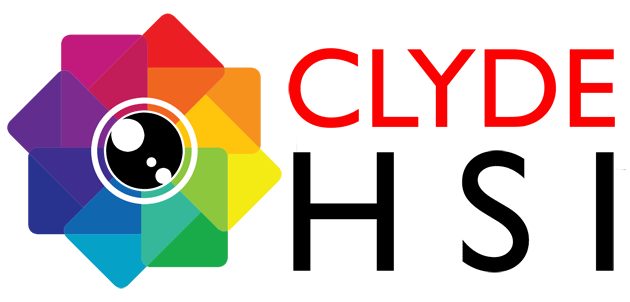CLYDEHSI LENSES
The objective lens used in front of the imaging spectrograph is a crucial component in the system design and operation. Firstly, it must provide a high quality image, and secondly, it must also transmit light across the full spectral range of the spectrograph or hyperspectral camera being used.
Each ClydeHSI lens can be locked in position to ensure focus is maintained even in harsh environments. Mechanical stability is guaranteed for the best stability in optical imaging and spectroscopy measurements.
Furthermore, every ClydeHSI lens is optimized for its spectral range and is fully multi-layer anti-reflection coated for the best transmission quality across the spectral range with minimum stray light and flare.
A NOTE ON FIELD OF VIEW AND
INSTANTANEOUS FIELD OF VIEW
The Field of View (FOV) and the Instantaneous Field of View (IFOV) are characteristics of an imaging system that define the angular acceptance of the sensor to incoming light.
They are therefore dependent upon the sensor and pixel sizes as well as the focal length of the objective lens being used.
The angular FOV and IFOV are commonly expressed in degrees, while the linear field of view is a ration of lengths. FOV can be measured horizontally, vertically, or even diagonally.
FIELD OF VIEW (FOV)
Focal length of the objective lens, f
Spectograph slit length, Ls
Spectograph slit width, Ws
INSTANTANEOUS FIELD OF VIEW (IFOV)
Spectograph slit width, Ws
Focal length of the objective lens, f
LENSES FOR
SWIR-384
CAMERA
(1000-2500 nm)
Note: table shows the lens performance with a 30 μm spectograph slit.
| Focal Length (mm) | FOV (deg) |
|---|---|
| 15 | 35.5 |
| 22.5 | 24.1 |
| 30 | 18.2 |
| 56 | 9.8 |












